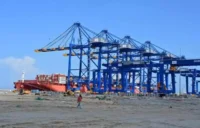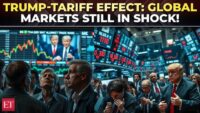As President Donald Trump ramps up his tariff offensive against key trading partners, India finds itself at a critical juncture in its economic strategy. With the US and India engaged in a delicate dance of trade negotiations, the stakes have never been higher for both economies. Will India’s economy weather the storm of protectionism, or could these challenges catalyze transformative reforms?
The US and India have a complex trade relationship. In 2024, bilateral trade reached a record $129.2 billion, yet India ranks just tenth among US trading partners. The US runs a significant trade deficit with India, importing $45.7 billion more than it exports. Trump has repeatedly criticized India’s high tariffs, which average 12% compared to the US average of 2.2%.

The Tariff Challenge
Trump has threatened to impose reciprocal tariffs on India, mirroring the country’s tariff structure on US exports. This could potentially disrupt India’s exports to the US, which totalled nearly $74 billion in 2024. Estimates suggest Trump’s new tariffs could cost India up to $7 billion annually.
India’s Response
India has already taken steps to address these challenges, including:
- Lowering import duties on certain US products like motorcycles
- Pursuing free trade agreements with other countries to diversify export markets
- Exploring opportunities to increase exports of technology, electronics, and jewellery to the US
Economic Impact
The Federal Reserve has cut its US growth forecast, acknowledging that tariffs are driving up prices and creating uncertainty. For India, this means:
- Potential disruptions in export markets
- Increased costs for imported goods
- Pressure to implement domestic economic reforms
Economists suggest India could benefit from the strained US-China trade relationship by positioning itself as an alternative manufacturing hub. “The time is ripe, and the incentives are in place for these two leaders to beat the odds and make a major deal,” wrote Kenneth I. Juster and Mark Linscott in a Foreign Policy article.
Potential Industry Shifts
- Manufacturing Growth: India could emerge as a key manufacturing destination if it negotiates favourable trade terms and improves its infrastructure.
- Technology Sector Expansion: Increased US investment in Indian technology could accelerate growth in this sector.
- Regional Trade Leadership: India could position itself as a regional trade leader by strengthening ties with Southeast Asia and the Middle East.
Expert Predictions
Analysts believe the current trade tensions could prompt India to reconsider its economic policies. A report from the Center for Strategic and International Studies noted that “a deeper economic relationship with India is in the United States’ interests. “
As trade tensions escalate, India faces a pivotal moment in redefining its economic strategy. The coming months will reveal whether the country can navigate these challenges while advancing its financial interests. What are your thoughts on how India should respond to Trump’s tariff war? Share your perspective below and subscribe for more insights into economic trends.









